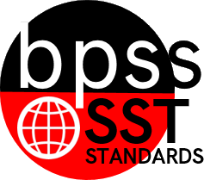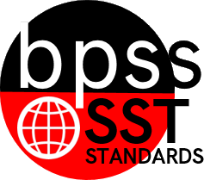3rd Grade Social Studies (Archived)
 BPS District Social Studies Standards Book
BPS District Social Studies Standards Book
SST-03 "I can ... statements"
1st Grade Social Studies
2nd Grade Social Studies
4th Grade Social Studies
5th Grade Social Studies
7th Grade Social Studies
8th Grade Social Studies
| Prioritized Benchmarks |
SST-03.4.01
Student Learning Targets:Knowledge Targets
Proficiency Rubric
ResourcesWebsites Helping Your Child With Social Studies
Vocabulary
| ||||||||||||||||||||||||||||||||||||||||
SST-03.5.01
SST-03.5.01 Identify the physical characteristics (e.g., landforms, bodies of water, vegetation, wildlife and climate) of the local community.Student Learning Targets:Knowledge Targets
Reasoning Targets
Skills (Performance) Targets
Product Targets
Proficiency ScaleThe Student ...(1) Beginning
(2) Developing
(3) Proficient
(4) Advanced
ResourcesVocabulary
| |
SST-03.5.02
SST-03.5.02 Identify the seven continents, four oceans, and major nations of the world (i.e. United States, Canada, Mexico; i.e. China, Brazil, Russia).Student Learning Targets:Knowledge Targets
Reasoning Targets
Skills (Performance) Targets
Product Targets
Proficiency ScaleThe Student ...(1) Beginning
(2) Developing
(3) Proficient
(4) Advanced
ResourcesVocabulary
| |
SST-03.6
Narrative for the Human Development and BehaviorThrough active learning experiences, third grade students gain knowledge and process information about their local community from a variety of resources. They identify important historical events, places, and persons from the past and make connections with their present community.Third grade students explore their own community, including its: human and material resources, major work and services, and basic beliefs and values. Calculation Method for StandardsStandards are larger groups of related benchmarks. The Standard Grade is a calculation of all the related benchmarks. Click on the benchmark name below each Standard to access the learning targets and proficiency rubrics for each standard's related benchmarks. | |


 Standard 5:
Standard 5: